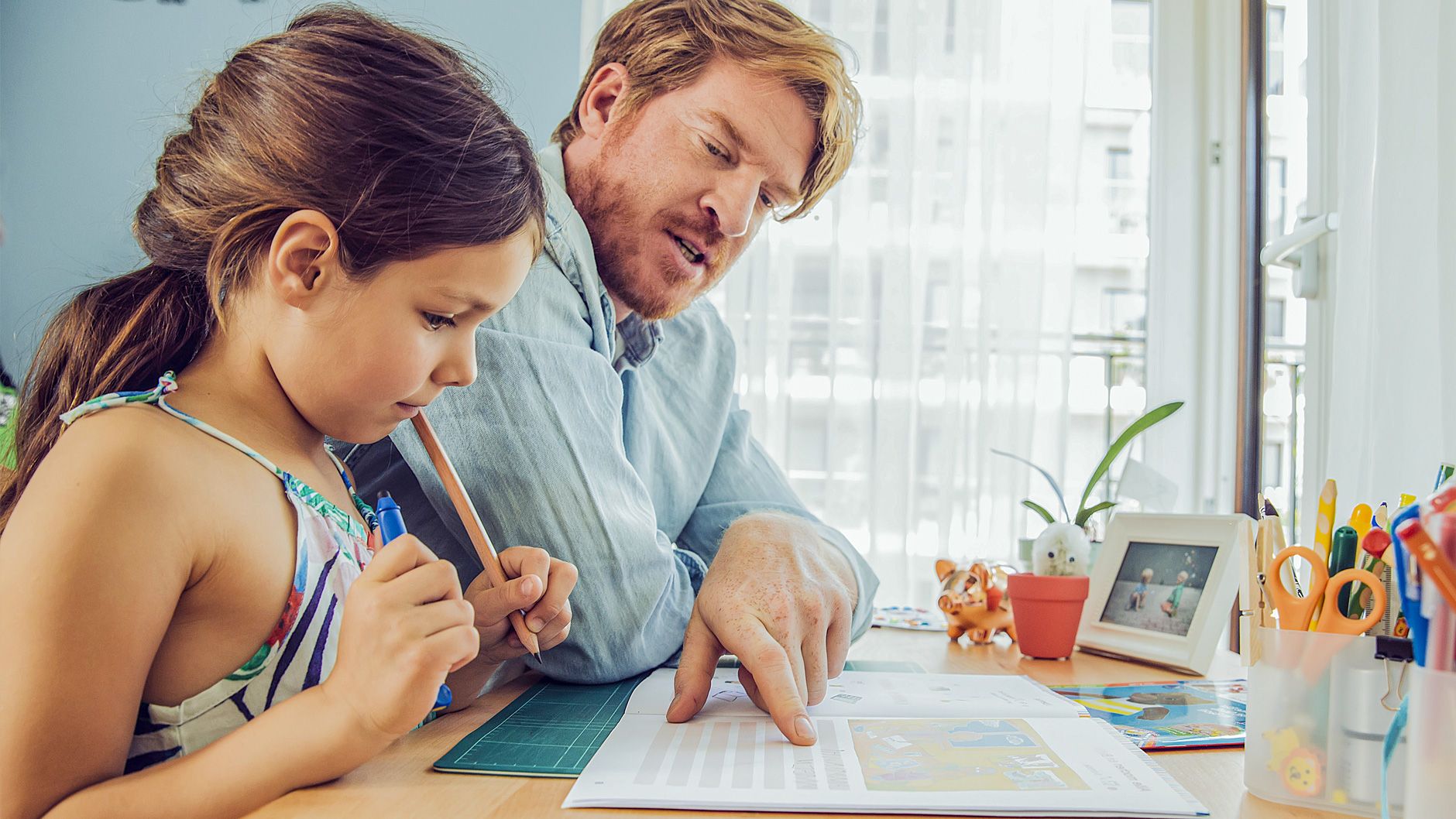We tend to lose perspective when trying to teach our own children. Perhaps it’s because they’re so frustratingly like us, or because we have such intimate knowledge of their true potential that watching them struggle and bungle and purposely distract themselves is about as heartbreaking as it comes.
When your child needs homework help or support with exam prep, there are a range of options available to you. You could roll up your sleeves and tackle the problem yourself (cue reaction above), enlist extra support from their teacher, download a range of free or paid educational resources to bolster their learning, or call on the expertise of an outside tutor.
Each of these options comes with its own pros and cons, including varying financial commitments and degrees of effectiveness
Parents helping out at home
It’s important to understand that almost all parents struggle to tutor their own children. This is likely because we see our kids as extensions of ourselves. We lose objectivity and spend every lesson exchanging passive aggressive remarks with our young ones (especially the teenage variety). Unsurprisingly, this is not particularly conducive to learning.
On the other hand, children can feel most comfortable at home. They often feel less inhibited about asking ‘silly’ questions in the absence of their peers. What’s more, learning at home often means going at their own pace — taking the time to really absorb knowledge.
Support from teachers
A similar pattern can emerge at school, where the student-teacher dynamic has become such that the student can’t get past whatever is blocking their progress. They might feel that they’re being treated unfairly by their teacher or lack confidence in front of peers whom they consider ‘smarter’. In the end, it starts to impact their learning.
Educational resources
There are a range of paid and free educational resources online which can help with almost every topic imaginable. YouTube EDU offers free video tutorials on everything from algebra foundations to Mayan culture. There’s also MathGames and ReadWriteThink, Scratch and even MetKids. These are wonderful and often free learning platforms to engage kids in a wide range of topics. However, despite the wealth of knowledge filling these sites, they won’t target your child’s specific learning needs (what about classroom algebra are they failing to understand? Is it the way it’s explained? The worked examples?). There’s also an intense requirement for self-discipline i.e. unless you’re sitting next to your child, there’s nobody to engage them beyond the screen in front of them.
Online courses
Learning platforms like Udemy and Khan Academy offer free online courses for children from preschool to senior levels. The benefit of these platforms is that they provide programs and materials on a huge array of topics, often delivered via video and enjoyed in the comfort of your own home. The disadvantage of universal resources is that they take a one-to-many approach, much like a classroom format. It’s up to you (or your child) to sift through the list of topics to find the relevant lesson and there’s no way to target or tailor the learning to the specific needs of your child.
Outside tutoring
The phrase ‘unconditional positive regard’ describes the relationship a therapist has with their client. The relationship between a tutor and student is similar. The learner is on a journey and the tutor is there to accompany them on that journey, providing accurate, unbiased advice, unencumbered by any emotional burden.
For a student who has lost confidence, having an adult who is not their parent or teacher offer reassurance can improve their confidence and ability. This will, in turn, improve their academic performance.
Tutoring is a tailored solution intended to help improve your child’s grades, bolster their confidence, and deepen their enjoyment of school so that they might become a lifelong learner. It’s the best option when a one-to-many approach has failed your child — when they’re distracted in group situations and display learning needs which can’t be addressed by their teacher in a class of thirty children.
